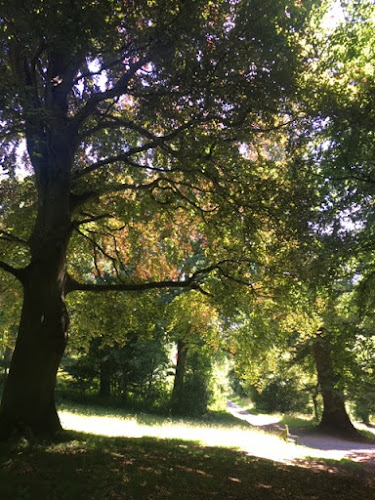In my last post, (sorry - I know it was some time ago!) I wrote about a book fair I attended in Corsham, Wiltshire, with Sharon Tregenza, Jasbinder Bilal, Chris Vick and others. It was good fun - and it gave me some food for thought.
I had a number of books on display. I'm not a particularly prolific author, and I'm a bit of a butterfly - my books are all quite different. I've always seen this as a disadvantage, but on this occasion, it turned out to be be a good thing, because there was something for (almost) everyone:
Spook School and two similar funny fantasy stories for younger children;
Emily's Surprising Voyage, which is a story set on Brunel's ship the SS Great Britain in the 19th century, beautifully illustrated by James De La Rue;
Jack Fortune, which is a middle grade historical novel about a boy who goes plant-hunting in the Himalayas at the end of the 18th century, in search of the elusive blue rhododendron; and
Warrior King, which is a novel about Alfred the Great.
They all attracted attention - except for
Warrior King. The reason for this was pretty obvious.
The book was originally published by Walker. I loved researching and writing it, and I had high hopes that it would make out of Alfred a hero of the stature of King Arthur - with whom Alfred is often confused. Arthur is, or was then (this was before Bernard Cornwell's books and the subsequent TV series) much more famous than Alfred, and this struck me as particularly unfair as Arthur isn't even
real - or at least, the Arthur of the stories isn't.
They designed a beautiful cover for it - this one. It was blue, and had a hunky, brooding warrior on it. The sales team, I was told, were keen to appeal to boys who were interested in
Lord of the Rings, and it had that kind of feel to it. I loved it - though I was a little concerned when a bookseller who had hitherto been very supportive of my books expressed concern, asking how could he sell a book with a cover like that to girls? And there was every reason that girls would like it: two thirds of it is seen from the point of view of Aethelflaed, or Fleda as I called her in the book. She had been a great discovery: I needed a child for a point-of-view character when I came to write about grown-up Alfred (the first bit of the book is about his childhood) - and was delighted to find he had a daughter of just the right age - who as an adult became a ruler in her own right of a neighbouring kingdom, Mercia. So she was obviously a girl of character who learned a good deal from her father. And there's also a charismatic British woman called Cerys - and a brave Frankish princess called Judith Martel.
Anyway, for whatever reason, the book didn't sell in zillions and went out of print. I got the rights back, and decided to reissue it through Amazon Createspace. Lots of adults had read it and enjoyed it, so I thought I would try marketing it as a book for a wider audience, not only for children. And so the cover I made for it is sombre and moody: I used a photograph of floods on the Somerset Levels near Athelney, where much of the story takes place. There is a regular trickle of sales, small but satisfying.
But at the book fair, I watched as children's eyes slid over
Warrior King and lighted on
Jack Fortune - clearly because it was sending out signals that here was a book for grown-ups. Hm, I thought.
So I decided to bring out a new edition that would a) be clearly for children/young people, and b) would make it obvious that it wasn't just about the king, but also about his daughter. I toyed with various ideas as to how to do this; and then I remembered the work of a friend on Instagram called Norlemann, who posts wonderful pictures of Viking re-enactors in Norway. On impulse, I sent him a message to explain what I was after, and ask if he had anything I could use.
Now, I called him a friend just then, but he was only a friend in the sense that I followed him and often 'liked' his pictures. It turns out he's an art director and professional photographer - and yet he agreed to do a special shoot, with his daughter as Aethelflaed - just because, he said he and his daughter, Minna, believe that historical fiction is valuable and there should be more of it. Such kindness from a stranger! And when the photographs arrived, I thought they were stunning.
The next hurdle was fitting the photograph I eventually chose - with help from friends - into an Amazon template. That wasn't as easy as it could have been. In the end, I used Canva to add title and text to the front cover - and here it is.
It would be lovely to hear your thoughts - but do forgive me if I'm not able to implement them. There are some changes which would be easy to make, but others would be very fiddly and might possibly result in my brain imploding. (Basically, changes to the front cover would be tricky: changes to the rest of it, less so.)
All I need to do now is add the content of the book. But first I will tweak it; and in a prominent place there will be an acknowledgement of the generosity - and skill - of Lasse and Minna. Oh, yes, and then it would be really very nice if it would sell lots of copies to the children for whom I originally wrote it...




















